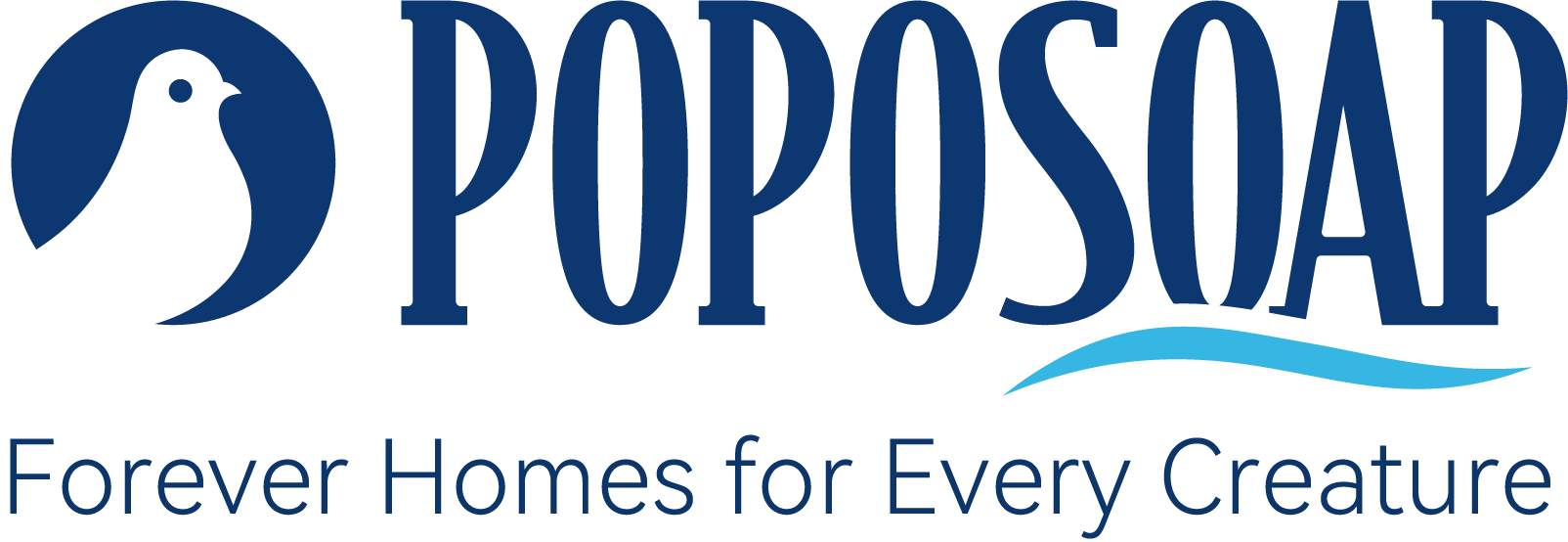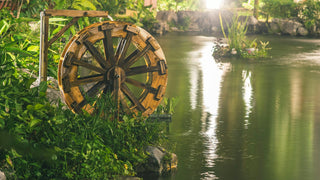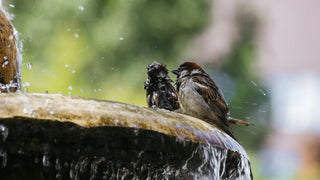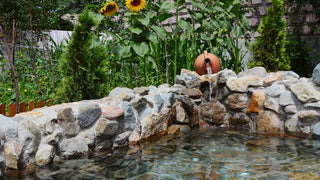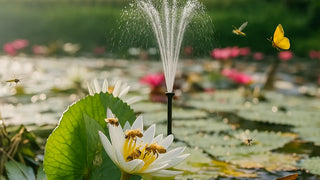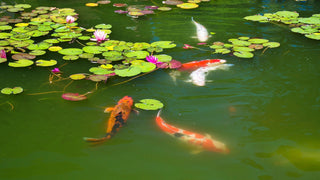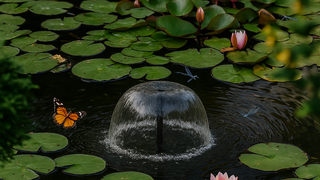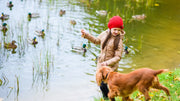
Koi Pond Safety Tips for Curious Pets
If you’ve ever had a dog charging through the garden or a cat prowling along the edge of a water feature, you’ll know ponds can be a magnet for curiosity. To pets, a koi pond isn’t just a decorative part of the yard--it’s a drinking bowl, a place to cool off, or a moving playground filled with colorful fish. For their owners, this harmony may be stressful. We prefer to protect our pets from accidents and our koi from unnecessary stress. The good news is that with some planning and some reasonable adjustments, you can enjoy your pond without being perpetually anxious.
Hazards of Harmony between Fish and Pets
Dogs and cats are not cruel, but their fundamental natures often work against ponds. A thirsty dog may drink directly from the pond and stir up silt at the same time. Cats, with their hunting reflexes, might swipe at koi or sit for hours waiting for movement. Both situations put stress on the fish, and in deeper ponds there’s also the chance of pets falling in. While most animals are capable swimmers, steep pond walls make climbing out harder than you’d expect. Conversely, large dogs splashing in can ruin pond liners, disturb plants, and muddy water in seconds.
So when koi pond safety pets are being considered, it's also nice to remember: dangers work both ways. The pond needs to be protected from pets, and the pets need to be protected from the pond.
Safety Measures
The first layer of safety comes from design. If you’re still planning your pond, build in a few shallow shelves near the edge. These create safe exit points if a pet falls in, and they also double as planting zones. Avoid very sharp drop-offs; a gentle slope is kinder both to pets and to wildlife.
Training is also a big part. Just like you would train a dog not to be on the couch, you can train them to be mindful around the pond. It's tedious work, but straightforward commands and constant monitoring are beneficial. For cats, training isn't as feasible, so the focus usually shifts towards creating physical barriers (more on that to come).
Lastly, think of substitutes. Dogs naturally visit ponds to drink water, so placing a clean, shallow basin elsewhere in the garden will serve to divert them. A bubbler fountain or miniature water feature elsewhere other than the main pond can be wonders in keeping pets busy.
Fencing and Covering Solutions
Despite training, some pets are simply beyond help. That's when creating a pet proof pond comes into play.
A low fence is generally the easiest option. It need not be a ugly or a tall fence--short pickets, attractive metal edging, or even a thorny border of thick shrubs may be enough to discourage a dog. In cats, netting or mesh over half of the pond prevents paws from entering and also protects koi from birds and other predators. Other proprietors install grates a bit below the waterline on small ponds; these are physically inaccessible to pets but still allow the pumps and fountains to function.
If you’re worried about ruining the look of your pond, planting cleverly helps. Tall grasses or flowering plants can create a visual and physical buffer without feeling like a fence. Done well, these solutions blend into the landscaping while still adding that extra layer of pond pet safety tips in practice.
Poposoap Special Accessories
In addition to physical barriers, sound pond hardware also helps with pet-safe quality. Poposoap offers a range of accessories that ensure moving, clean, and easy-to-clean water--qualities that save the day when pets inevitably get on the pond.
- Solar pumps and fountains: Continuous circulation discourages pets from drinking standing water and aerates the pond, keeping the koi healthier.
- Filter boxes: If a dog kicks up leaves or mud, a guard filter box above the pump keeps trash from clogging the system.
- Flexible solar panels and extension cables: These make it safe to position equipment beyond the reach of inquisitive paws.
- Pond lights: Inward-facing lights using low-voltage power don't just give nighttime visual appeal--they also allow owners to keep an eye on pets after dark.
By incorporating intelligent design into these accessories, it is quite much easier to maintain a clean, stable pond and provide protection for equipment from inquisitive animals.
Pet-Friendly Cases
Most pond keepers have already solved these problems in creative ways. One family with two Labradors built their koi pond with wide shelves all the way around it. The dogs did get in every now and then but simply climbed out without causing any harm to the liner. Another family with three cats had a mesh lid stretched tightly over their pond--problem solved, and as an added advantage, herons called less too.
On a smaller scale, one homeowner used Poposoap's mini pond kit. A bubbler nozzle and light mesh cover were put in place so that the cats would sit nearby and watch what was going on but couldn't put their paws in the water. One gardener I recently spoke with placed warm-white pond lights along the border of their middle-sized pond. They glowed in the dark, and not only did they look great but they also kept their little terrier out of the water at night.
All of these indicate that there is no single solution. The right combination of barriers, training, and equipment will depend on your pets and your location. But all of them indicate that koi ponds and animals can coexist harmoniously.
Conclusion
Koi ponds add calmness and elegance to a backyard, but to pet owners, they also mean added responsibilities. Dogs and cats think about ponds differently than we do, so for this reason alone, koi pond safety pet planning is necessary. Through the inclusion of shelves, using fences or covers, and counting on tools like Poposoap pumps, filters, and lights, you can make a pet proof pond accessible to everyone.
The best pond pet safety tips aren’t complicated: understand the risks, put in barriers where needed, and choose equipment that supports a healthy, balanced pond. Do that, and you’ll have koi gliding peacefully under the surface while your pets explore happily--and safely--around them.
